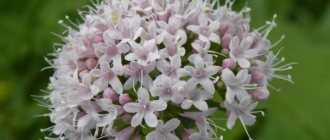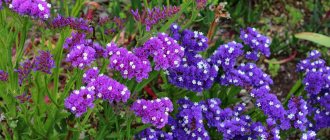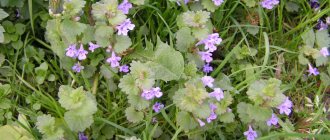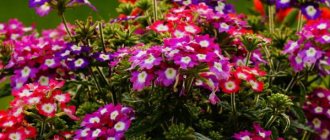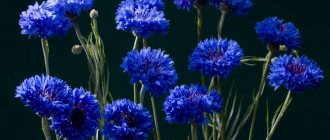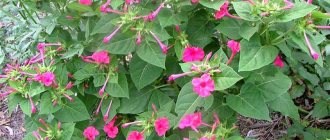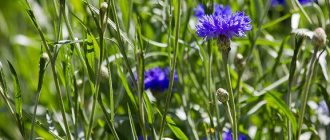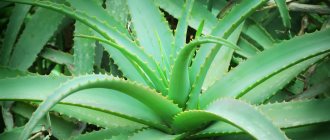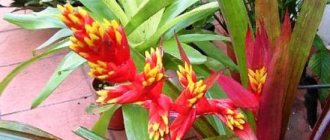Cornflower is a herbaceous perennial, biennial or annual plant. Distinguished by its beauty. Very popular among gardeners. The stem is of two types: recumbent and erect. The height reaches a meter. Leaves also come in two types: full and dissected. The inflorescences are baskets of different shapes. There are several types of flowers: funnel-shaped flowers, located at the edge, and tube-shaped flowers, located in the middle. The color scheme is very diverse: flowers are white, yellow, crimson, orange, red, blue, purple and many others.
Bathonic description of garden cornflowers and the birthplace of their growth
The cornflower's habitat is all over Europe. Often found among crops. One of the types of cornflower, namely cornflower (also called blue cornflower), is found throughout Europe as a weed. Its location is especially common in winter grains. To get rid of it, the soil is covered with lime, the beds are also well weeded and the seeds of the desired crops are thoroughly cleaned. In some European countries, cornflower is almost the most harmful and difficult to remove weed. But in addition to the negative qualities of some species, cornflower also has advantages, the main one of which is its beauty. Thanks to her, he is popular among flower sellers and gardeners around the world.
Did you know how to plant ageratum flowers?
All about caring for nepenthes plants at home.
Types of garden perennial cornflowers
The genus of cornflowers has about five hundred species, which differ from each other primarily in external parameters, as well as in life expectancy (annual, biennial, perennial).
The most common types of perennial cornflowers are:
- White cornflower. A plant reaching up to 30 centimeters in height, the flowers are double to the touch, the color is white. They are collected in small baskets with diameters of about five centimeters. This species is listed in the Red Book due to its rarity.
Photo. White cornflower
- Mountain cornflower. The most popular of the perennial species is the representative of cornflowers. The stem of the plant reaches a meter in height, the rhizomes are very powerful, covering a large area.
Photo. Mountain cornflower
- Yellow cornflower. A bush that holds its shape well. It grows up to a meter high, which gives a good view of its bright yellow flowers, the diameter of which does not exceed five centimeters.
- Large-headed cornflower. A bush reaching 120 centimeters in height. The flowers have a diameter of up to 8 centimeters, which makes them the largest among all representatives of the cornflower genus.
Photo. Large-headed cornflower
- Eastern cornflower. A wild plant whose height ranges from one to twenty meters. The leaves are divided and whole, the color is bright yellow. Flowers are collected in inflorescences.
Photo. Eastern cornflower
- Meadow cornflower. Herbaceous plant. The height of the stem is 80 centimeters. The leaves are lanceolate or ovate, located at two levels: lower and upper. The lower leaves are on winged petioles, and the upper ones are closer to the flowers. The flowers are located in baskets, the color is lilac-pink. This type of cornflower is more common in Eurasia. In Europe he is poorly known.
Photo. Meadow cornflower
- Whitened cornflower. It has an erect stem reaching a height of half a meter. It is one of the most popular species due to its beauty. The flowers are bright pink, up to five centimeters in diameter. It blooms in summer, from late July to late August.
Photo. Whitened cornflower
- Pink cornflower. The erect and strong stem reaches a height of one meter. The inflorescences are strongly swollen. The inflorescences are solitary, up to five centimeters in diameter. The leaves are lanceolate, the color is dark green. Blooms in June and July.
Cornflower - description of the plant
It is a herbaceous, beautifully flowering perennial, biennial or annual plant with erect or recumbent stems reaching a height of 120 cm. The leaves are arranged in a regular order, from whole to variegated. Inflorescences are baskets of various shapes, from simple spherical to cylindrical, scale involucres are bare or drooping, arranged singly or in several pieces in corymbose or paniculate inflorescences. The funnel-shaped marginal flowers are centrally tubular-funnel-shaped or tubular, with different colors. There are white, blue, yellow, pink, purple, blue, red and burgundy. The root systems of the flower are varied.
Depending on the species, cornflowers are:
- long branching rhizomes;
- forming thickets due to a large number of root shoots;
- with a short and strongly branching root forming a clump;
- with a deep root tap;
- with a thick powerful rhizome.
When and how to plant garden perennial cornflowers
It is recommended to plant the plant in the spring. You need to let the soil warm up so as not to freeze the plant. Most often planted between mid-April and late May. Cornflower is unpretentious to soil quality; you can plant it in any soil except clay, but be sure to loosen the soil before planting. Root sections are planted with a bud, and root shoots with rhizomes and seedlings. Since the rhizomes of the plant are developed, they should be planted at a distance so that the plants can calmly coexist without trying to “fight” for territory and mineral resources.
When planting, the roots should be spread in different directions, the bud should be at the same level as the ground line. If you are planting a type of cornflower with roots growing horizontally, then you should lower the bud a little underground, literally a few centimeters.
Growing perennial cornflowers
Grow cornflowers where there is enough space
Plants are grown outdoors, in open ground, in a place that is well lit by sunlight. Basil loves freedom, so growing it in pots at home is strictly not recommended. The distance between flowers should be at least 30 centimeters. Otherwise, the seedlings will simply prevent sunlight from reaching each other, and there will also be a sharp lack of minerals.
The best soil for growing cornflowers is fertile. Any vegetable or garden soil will do. But the soil must be rich in humus and minerals. Some varieties of cornflowers (annual and biennial) are adapted to alkaline soils.
Application in landscape design
Cornflower will look equally beautiful both in the park lawn and near the house. Perennials for rock gardens are chosen to be low-growing. These varieties decorate rocky structures and mixborders. Borders and alleys are decorated with medium-growing varieties. Flowering cornflower will look good when there are city flower beds in the background. Bouquets and beautiful flower arrangements are created from tall varieties. They are specially grown for such purposes. Cornflower looks good next to daisies, delphiniums and phlox.
Caring for cornflowers
Most types of cornflowers require minimal care, which boils down to watering, removing weeds and digging up the top layer of soil. It is recommended to remove flowers that have wilted, if you, of course, want to maintain the beautiful appearance of your plants. Cornflowers grown for cutting should be fertilized once every two weeks. Buy complex fertilizers from a specialized store and feed the plants with them. Pests practically do not spoil cornflowers; only occasionally a spider mite can spoil the leaves. In this case, they should be cut off to prevent further infection of the plant.
[adsp-pro-5]
Legends about cornflower
There are many legends about this delicate flower, and one Greek legend says that heavy ears of rye asked the blue sky for help to support their ears. Because under the weight of the grain they lean heavily and do not see the blue sky. The sky replied that it would descend so low that they would see it and fulfilled the request of the rye.
And when after a while it returned to its place, a part of this beautiful sky remained on the earth and after a while it turned into wonderful heavenly flowers - cornflowers. And since those ancient times, when the grain ripens and bends down to the ground, they see these beautiful flowers.
There is also a Roman legend about the young faun Cianus, he very often used the color blue in his clothes. In his prime, he suddenly left this sublunary world and was found in a grain field. The goddess Flora, whom the young man idolized when he was still alive, turned him into this beautiful and delicate flower.
Some almost forgotten facts about the beautiful flower
- Germans have a special love for blue flowers. Queen Louise, in exile, collected cornflowers and wove them into wreaths. When she placed the first woven wreath on the head of her daughter Charlotte, she felt in her soul that everything would be fine with them. Subsequently, her daughter ascended the throne, becoming the Russian Empress Alexandra Feodorovna;
- In Sweden, these flowers are on the country's coat of arms;
- It is believed that this plant has not only medicinal properties, but also magical powers. A bouquet of flowers presented to a loved one will serve as a talisman for the family and keep the spouses faithful.
The most unpretentious flowers
Read about annual flowers for the garden here.
aklumba.ru
White cornflower is one of the most exquisite perennial cornflowers.
Description Whitened cornflower. An unpretentious perennial loved by many gardeners . Forms a bush up to one meter high and holds its shape well. It blooms from July until autumn with soft pink single baskets up to 5 cm in diameter. The leaves are carved, dark green, pubescent, located on strong thick stems. The plant's homeland is the Caucasus, northeastern Turkey, northern Iran.
Place for planting White cornflower . Cornflowers prefer spacious sunny areas; even slight shading is negative. The planting density should be such that the plants do not shade each other and each of them receives a sufficient amount of light. Cornflowers prefer loamy, neutral soils. Acidic soils are limed in the fall, sand is added to soils that are too heavy, and rotted organic matter is added to soils that are too light.
Planting White cornflower. Cornflower is planted in the spring when stable warm weather sets in. The soil is dug up, fertilized, loosened, and plants are planted at a distance of at least 30 cm without deepening them: the root collar should be at soil level. The soil around the plant is compacted and watered.
Caring for white cornflower consists of watering, weeding and loosening the soil. Cornflowers do not like excess moisture; most likely, they will only need the moisture that enters the soil with rain. To avoid soil compaction, loosen it after watering. Cornflowers intended for cutting should be fed once every two weeks with complex mineral fertilizers at the rate of 20-30 grams per sq.m. After flowering, the shoots are cut at a height of about 10 cm above ground level so as not to disturb the decorative effect of the flower garden.
Reproduction White cornflower. Cornflowers are propagated by dividing horses or cuttings. For the first method, at the end of August, the bushes are dug up, the above-ground part of the plant is cut off, the roots are washed and divided so that there are 1-3 buds on each division. The delenki are planted in a permanent place. Cuttings are carried out in August using generally accepted technology.
Use of whitened cornflower in garden design. Cornflower is an excellent plant for mixborders , rocky hills; single plantings of cornflower look great against the backdrop of an emerald lawn . Cornflower is great for cutting and lasts a long time in bouquets .
The online store of garden plants "Garshinka" has the largest collection of plants and carefully delivers planting material from all over the world throughout Russia. We guarantee the quality and grade of the supplied material. We store plants ready for shipment in special conditions. We pack parcels in a secure manner. We notify you about shipment and control the parcel en route. We work on a 100% prepayment basis in order to reserve the best varieties for you and guarantee on-time delivery without postage or commissions.
We recommend purchasing garden plants from the Garshinka online store to experienced and novice gardeners, landscape designers and joint purchasing communities. There is a unique offer for every buyer. Here you can buy various planting materials: seedlings of roses, fruit and ornamental trees and shrubs, all groups of conifers, standard species, rhizomes of perennial flowers, bulbous plants for autumn and spring planting, lawn grass seeds, fertilizers and pest control products.
www.garshinka.ru
Methods for propagating garden cornflowers
Cornflowers reproduce by dividing the bush, cuttings and seeds
Perennial cornflowers reproduce using root cuttings, dividing the bush and seeds. There are three ways to reproduce. Seeds should be sown in spring. After grazing, the beds must be thinned out heavily. The distance between the bushes should not be less than 30 centimeters. After flowering, the cornflower begins uncontrolled self-seeding.
Planting and replanting should be done in late summer or early autumn. The bush that you want to transplant should be dug up, cleared of soil and its rhizomes placed in water for a while. The shoots need to be shortened. For transplantation to be successful, the plot must have three or more buds. The delenka should be planted in the required place, and the upper part of the plant should not exceed a height of ten centimeters. Watering should be done moderately, several times a week. It will take a year for the plant to take root, after which the plant will immediately begin to bloom profusely.
Wild species
What types of Cornflower are common in the wild? Here are some of them :
- Eastern cornflower (Centaurea orientalis)
- Phrygian cornflower (Centaurea phrygia)
- Cornflower (Centaurea preudophrygia)
- Cornflower (Centaurea jacea)
Oriental (Centaurea orientalis)
Oriental cornflower (Centaurea orientalis)
This perennial variety of cornflower has a tall growth of 120 cm and large yellow flowers located at the ends of powerful shoots.
Phrygian (Centaurea phrygia)
Phrygian cornflower (Centaurea phrygia)
Perennial, bush height can vary from 30-130 cm . The flowers are large, up to 5 cm in diameter, the middle leaflets are involucre at the apex with a constriction and black fringed-dissected appendages.
Grows throughout Russia.
False Phrygian (Centaurea preudophrygia)
False Phrygian Cornflower (Centaurea preudophrygia)
This species resembles the Phrygian Cornflower. The difference is that the color of the appendages is brown and there are no constrictions on the involucre leaves. Flowering continues throughout the summer and early autumn . Grows throughout central Russia.
Diseases, plant pests and methods of combating them
Perennial cornflower is very resistant to parasites and infections. It is only susceptible to attack by mites and fungi. Fusarium is the most common fungal disease of cornflowers. Its signs are primarily foliage diseases: they instantly turn yellow and may even fall off. To eliminate the disease, damaged leaves should be cut off, and the places on the trunk where these leaves were should be treated with a special product. For example, “Benomil” is suitable, which can be bought at an affordable price in any specialized plant care store.
Houseplant polyscias and everything about caring for it at home. We recommend that you get acquainted with the interesting flowering Christmas tree Chamelacium.
On hot summer days, cornflowers can become infected with spider mites. You can determine this by looking at the leaves: spots of different sizes and colors should appear on them, and the leaves themselves should turn yellow. Affected leaves should be immediately cut off and thrown away, and the bushes should be sprayed and thoroughly wiped with water mixed with soap. Do this twice a day until the plant is cured.
Watch the video about cornflower flowers, in it you will learn some more useful information, we wish you pleasant viewing.
Where and in what areas are perennial cornflowers used?
But not only gardeners love this crop. Cornflowers are used in a number of other areas:
- Medicine: classical and folk. In classical medicine, cornflowers are used to treat diseases of the eyes, liver and bile ducts. Used as part of an antiseptic to disinfect wounds and fractures. In folk medicine, infusions are made from cornflowers, which are used as a diuretic. Also, tinctures of certain types of cornflower help with coughs and other colds, as well as for the prevention of ARVI.
- Gynecology. A decoction of cornflower brings the menstrual cycle back to normal.
- Cosmetology. The decoction can help relieve some temporary skin problems such as eye bags, enlarged skin pores and allergic reactions.
Usage
Cornflowers in landscape design photo
Known since ancient times, cornflower has a wide range of applications:
- for decorative purposes - wreaths are woven from it and bouquets are made;
- used as a natural dye;
- for cosmetic procedures;
- in the alcoholic beverage industry;
- in traditional and folk medicine.
A bouquet of cornflowers looks simply luxurious photo
Medicinal properties
In medicine it is used as a mild diuretic, as a lotion for eye diseases, and as an anti-inflammatory agent. The decoction and liquid extract have a choleretic effect. Fresh juice is used as a wound-healing agent, and the herb is applied to bruises and tumors. The decoction is used instead of lotion for facial care, as an anesthetic for toothaches. Modest and graceful, he was loved by many gardeners for his sophisticated beauty. Ideal for beginner flower lovers - with a minimum of attention, a positive result is always achieved. It blooms for a long time and requires virtually no care. Perennial species attract even the most sophisticated flower lovers with their ease of cultivation, beauty and charm.
vote
Article rating
